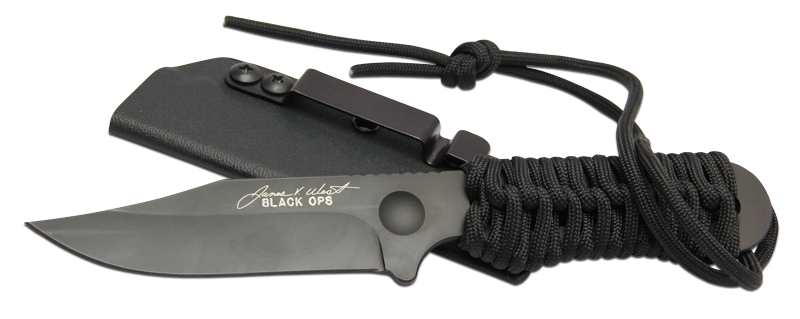Deceptive Punching Power
Why am I writing about deceptive punching power? This is difficult to describe or explain or really even understand, unless you are naturally gifted and have intuitive punching power based on speed, timing and distance. This goes beyond straight line distance control with respect to maximizing your punches. With regard to fighting, my 1st real fight trainer had a sign over his door stating “IF IT FEELS STRONG, IT’S WRONG”.
Power is at the end of your punch. It doesn’t matter if the punch is a jab from half way across the ring, or an upper cut, landing on your opponents chin 4” in front of your face. How do you gage timing, distance and power levels as it applies to landing effective hard punches from inside, outside and from angles? You have to have force and power at every instance.
The original form of Newton’s second law states that the net force acting upon an object is equal to the rate at which its momentum changes with time. If the mass of the object is constant, this law implies that the acceleration of an object is directly proportional to the net force acting on the object, is in the direction of the net force, and is inversely proportional to the mass of the object.
I guess you could say punching speed gives you more power, but is this true? The answer itself could be deceptive. On the surface the answer would be yes. In a fight it is not always so. How can this be the case? If your distance is off, if your timing is discernible and predictive, if your opponent moves in or out, cutting your punches short, riding your punches and simply making you miss. In all cases you may have both speed and force, your fist being the mass or object being projected. Too many times you hear if a fighter is very fast, he lacks power. That is contrary to the laws of physics. Therefore you must find a way for your punches to land effectively, while maintaining your speed.
“IF IT FEELS STRONG, IT’S WRONG”.
It feels good when you really hit a heavy bag really hard and watch the bag swing almost off the hook. The truth is this type of a punch is no more than a real hard and fast punch; in a fight many times pushing your opponent off balance and out of the fight, does not cause any real damage. This type of impact although heartfelt and strong, is no more than a big push. One of the problems here would be your point of impact and maximum power targeted area is beyond the power level executed with a well delivered punch that has immediate and faster recoil. So let’s add recoil to the effective and deceptive punching power you hope to achieve.
Let’s talk about deceptive punching power. There are several factors involving maximizing your punching power from all distances and angles. It’s all about timing, being in the right place at the right time. This means under stress and full speed.
Theories about hard punch vs. effective (deceptive) punching:
- A lot is said about Bruce Lee’s and others theories about moving your entire body (weight) to maximize your force behind the punch with the focus on not moving your body a great distance but rather to move it all at the same time. More is said about use your legs to generate power and then there is this …. Stay Inside Your Range – Your strongest punch doesn’t land when your arms are fully out-stretched. Your punch hits harder when it lands a bit shorter than your full range of motion. Don’t reach! This statement is where the most confusion comes into play, why, let me break this down to a more functional and possibly deceptive description;
- Stay Inside Your Range: I train people to fight from just outside of your comfort zone, just outside of what may be interpreted as “inside your range” This is why you should spend some time with a professional coach. When you are inside you your range, you also become a target, things can get tricky.
- Your strongest punch doesn’t land when your arms are fully out-stretched:
- There is a theory behind this concept, you should punch through your target, to a point this is true. The primary area I live by ….
“IF IT FEELS STRONG, IT’S WRONG”
- I used to train what is called a “weapons first drill” which was partially derived from the Joe Lewis, Bruce Lee and other great’s era training drills, designed to “Get off First” and without telegraphing. This is only a training technique teaching you to strike without anyone seeing your initial move. This is great, but done correctly you will be off balance at the end of the punch. I guess if you knock your opponent out, this would be great. It doesn’t always work that way and might short circuit any combinations, while you are regaining your balance. This typically gets your entire body behind the punch. 1” or otherwise. It’s the same principle and virtually negates your defense. Great to practice, but not effective while moving.
- The other idea here is many coaches feel you need to it your opponent before your punch has an opportunity to mature or fully develop into a mechanically correct punch, creating a big push. Although it feels strong, it may be wrong. It may be wrong if your recoil does not keep up with your footwork. This power punching technique leaves you vulnerable.
- Your punch hits harder when it lands a bit shorter than your full range of motion. Don’t reach!
- A knockout generally comes at the end of a punch and if executed properly you don’t even feel the blow you delivery. The opponent just fades and falls to the ground. This punch doesn’t feel hard at all.
- If your punch lands too short, you could injury yourself. Old boxers have a bag of tricks to cause another fighter to hurt himself from the hands all the way down to the floor, by stealthily cutting punches short.
- True enough if you stand within your range prior to throwing a straight punch you might deliver a punch without being detected. If it is to the eyes or throat or privates, you could be effective, especially if your hands are down and out of range of the peripheral vision.
- Also if you are in-fighting and using hooks, upper cuts, knees and elbows you might be very effective.
- This article is not to say you cannot be effective from inside your range, because you can, but would discourage you from pushing your punch instead of using proper recoil and penetration without pushing.
- This is where the deceptive power comes in by working your leverage off of angles when in-fighting.
- Deceptive punching power comes from working from outside of your range to inside by using a combination of tactics of moving and masking your intent.
- If you time your opponents aggressive footwork, you can catch him flush between step, work off at an angle to his side with hook type punches, while torqueing your body to maximize the use of the angles or spring up with uppercuts, they never saw coming. Like it is always said, the punch that gets you is the one you never see.
- Deceptive punching with power comes from all angles. The critical distance between you and your opponent, with respect to your punch choices is where effectiveness is found.
- There are many forces involved with footwork and having space to develop and deliver a power punch in micro seconds from any angle. This is another reason to practice on a heavy bag i.e. if you are working on the heavy bag and before you punch standing in position and without stepping and stick your hand out and touch the bag, you are too close. Step back 4-6 inches putting you outside of your own comfort zone; it makes you feel like it is hard to reach your target but it actually is forcing you to take a short step to allow your punch to fully develop. If your position and angle of attack are off, your punches will be less effective, potentially injuring yourself and not your opponent.
Deceptive punches can be achieved several different ways.
- You could use your jab hand from outside punching off to the left side of your opponents head causing him to move his head to the right for example walking him into a left hook.
- You could change your angle and with somewhat loose lead hand positioning, moving it around a bit, in relationship to your opponent to cover or mask the right hand, with your left hand.
- Fakes or feints take time to set-up but can be extremely effective for the one punch mixed in with a combination of punches hat has bad intention.
- At time you can even slow your punches down and allow for a little telegraphing, just to draw your opponents block so you will know where his hands are. If you can get your opponent to reach out with a blocking technique, this is perfect to set him up for the one he never sees coming. Joe Lewis once told me about this with the idea if you are faster than your opponent, he is hard to hit maybe because he has a good defense, but then you slow down or telegraph your punches making him block you instead of trying to fake or feint. Then once you have him trained to block a specific technique, you fake the punch to the area where he is comfortable blocking you and cut the punch short and turn a right or left. You stand a good chance of knocking him out.
These are only a few examples of what I demonstrated and taught my winning fighters.










2terminals
gay massachusetts chat no sign up https://bjsgaychatroom.info/
gay dating bakersfield https://gaypridee.com/
free chat and web cam sites for bi and gay men https://gaytgpost.com/
gay chat video sites https://gay-buddies.com/
craigslist gay dating site https://speedgaydate.com/
free slots for pc https://2-free-slots.com/
viva slots vegas free https://freeonlneslotmachine.com/
jackpot magic slots https://candylandslotmachine.com/
slots lv https://pennyslotmachines.org/
kanomi slots https://slotmachinesworld.com/
vegas slots free https://slotmachinesforum.net/
old vegas slots https://slot-machine-sale.com/
king kong slots https://beat-slot-machines.com/
500 nations free slots https://download-slot-machines.com/
free games slots https://411slotmachine.com/
slots lv https://www-slotmachines.com/
100% free slots games https://slotmachinegameinfo.com/
best dissertation writing help https://buydissertationhelp.com/
qualitative dissertation https://dissertationwriting-service.com/
cheapest dissertation writing services https://help-with-dissertations.com/
doctoral dissertation help https://mydissertationwritinghelp.com/
dissertation proposal help https://dissertations-writing.org/
18-month doctorate without dissertation https://helpon-doctoral-dissertations.net/